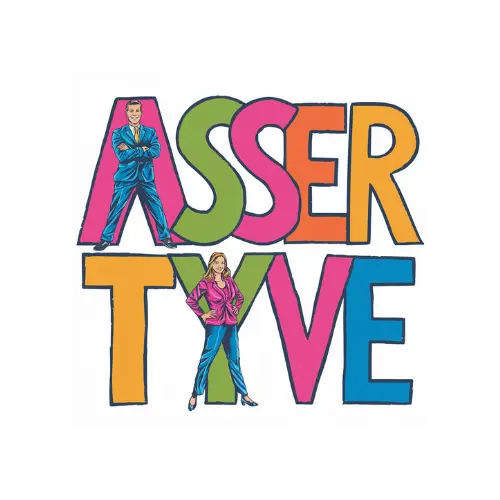Understanding the Basics of Sales Negotiation
Sales negotiation strategies are essential for any business looking to close deals and drive revenue. Negotiation is a crucial part of the sales process, and it requires a deep understanding of the customer’s needs, preferences, and pain points. Effective sales negotiation strategies can help businesses build strong relationships with their customers, increase customer satisfaction, and ultimately, drive sales growth. In this article, we’ll explore the best sales negotiation strategies to help you master the art of closing deals.
When it comes to sales negotiation, it’s essential to remember that it’s not about winning or losing; it’s about finding a mutually beneficial agreement that satisfies both parties. To achieve this, you need to be prepared, flexible, and willing to listen to the customer’s concerns. By doing so, you can build trust, establish credibility, and create a win-win situation.
Preparing for Sales Negotiation
Before entering into a sales negotiation, it’s crucial to prepare thoroughly. This involves researching the customer’s business, understanding their needs, and identifying potential pain points. You should also be aware of the market trends, industry standards, and the competitive landscape. By doing your homework, you can anticipate the customer’s concerns, develop a persuasive pitch, and create a solid negotiation strategy.
One effective way to prepare for sales negotiation is to create a negotiation plan. This plan should outline your goals, the customer’s needs, and the potential concessions you’re willing to make. By having a clear plan in place, you can stay focused, avoid impulsive decisions, and ensure that you’re working towards a mutually beneficial agreement.
Creating a Negotiation Plan
Here’s an example of a negotiation plan:
| Goal | Customer Need | Potential Concession |
| — | — | — |
| Close the deal within 2 weeks | Meet the customer’s budget constraints | Offer a discount of up to 10% |
| Increase the deal value by 20% | Provide additional features or services | Offer a free trial or demo |
| Build a long-term relationship | Address the customer’s concerns about quality and reliability | Offer a warranty or guarantee |
By having a clear plan in place, you can navigate the sales negotiation process with confidence and ensure that you’re working towards a win-win agreement.
Building Relationships and Establishing Trust
Building relationships and establishing trust are critical components of sales negotiation. When customers feel comfortable with you and your business, they’re more likely to be open to your proposals and willing to negotiate. To build relationships and establish trust, you need to be genuine, transparent, and empathetic. You should also be willing to listen to the customer’s concerns, ask questions, and provide solutions that meet their needs.
One effective way to build relationships is to use the SPIN selling technique. This involves asking questions that focus on the customer’s Situation, Problem, Implication, and Need-Payoff. By using this technique, you can gather valuable information, build rapport, and create a personalized pitch that resonates with the customer.
Using the SPIN Selling Technique
Here’s an example of how to use the SPIN selling technique:
-
Situation: “Can you tell me a little bit about your current sales process?”
-
Problem: “What are some of the challenges you’re facing with your current sales process?”
-
Implication: “How are these challenges impacting your business, and what are the consequences of not addressing them?”
-
Need-Payoff: “How would implementing a new sales process benefit your business, and what are the potential returns on investment?”
By using the SPIN selling technique, you can build relationships, establish trust, and create a personalized pitch that resonates with the customer.
Effective Communication and Active Listening
Effective communication and active listening are essential components of sales negotiation. When you communicate clearly and listen actively, you can build trust, establish credibility, and create a win-win situation. To communicate effectively, you should be clear, concise, and transparent. You should also be willing to listen to the customer’s concerns, ask questions, and provide solutions that meet their needs.
One effective way to communicate effectively is to use the 7 Cs of communication. This involves ensuring that your message is Clear, Concise, Complete, Correct, Considerate, Concrete, and Courteous. By using this framework, you can communicate effectively, avoid misunderstandings, and build trust with the customer.
Using the 7 Cs of Communication
Here’s an example of how to use the 7 Cs of communication:
-
Clear: “I’d like to discuss the pricing options for our software solution.”
-
Concise: “We offer a discount for bulk purchases, which can help reduce costs.”
-
Complete: “Our solution includes features such as data analytics, customer management, and reporting.”
-
Correct: “I apologize for the mistake earlier. Let me correct that for you.”
-
Considerate: “I understand that budget is a concern for you. Let me see what we can do to accommodate your needs.”
-
Concrete: “Our solution has helped similar businesses increase sales by up to 25%.”
-
Courteous: “Thank you for considering our solution. I appreciate your business.”
By using the 7 Cs of communication, you can communicate effectively, build trust, and create a win-win situation.
Handling Objections and Closing the Deal
Handling objections and closing the deal are critical components of sales negotiation. When customers raise objections, it’s essential to listen actively, acknowledge their concerns, and provide solutions that meet their needs. To close the deal, you should be confident, persuasive, and willing to negotiate.
One effective way to handle objections is to use the LAIR framework. This involves Listening to the customer’s concerns, Acknowledging their feelings, Identifying the root cause, and Responding with a solution. By using this framework, you can handle objections effectively, build trust, and create a win-win situation.
Using the LAIR Framework
Here’s an example of how to use the LAIR framework:
-
Listen: “I understand that you’re concerned about the pricing of our solution.”
-
Acknowledge: “I appreciate your honesty, and I understand that budget is a concern for you.”
-
Identify: “Let me see if I can identify the root cause of your concern. Is it the upfront cost or the ongoing maintenance fees?”
-
Respond: “I’d like to offer a discount on the upfront cost, and we can discuss a flexible payment plan for the ongoing maintenance fees.”
By using the LAIR framework, you can handle objections effectively, build trust, and create a win-win situation.
FAQ
What is the most effective sales negotiation strategy?
The most effective sales negotiation strategy is to focus on building relationships, establishing trust, and creating a win-win situation. This involves understanding the customer’s needs, being flexible, and willing to listen to their concerns.
How can I prepare for sales negotiation?
To prepare for sales negotiation, you should research the customer’s business, understand their needs, and identify potential pain points. You should also create a negotiation plan, which outlines your goals, the customer’s needs, and the potential concessions you’re willing to make.
What is the SPIN selling technique?
The SPIN selling technique is a framework for asking questions that focus on the customer’s Situation, Problem, Implication, and Need-Payoff. By using this technique, you can gather valuable information, build rapport, and create a personalized pitch that resonates with the customer.
How can I handle objections effectively?
To handle objections effectively, you should use the LAIR framework, which involves Listening to the customer’s concerns, Acknowledging their feelings, Identifying the root cause, and Responding with a solution. By using this framework, you can handle objections effectively, build trust, and create a win-win situation.
Conclusion
Sales negotiation strategies are essential for any business looking to close deals and drive revenue. By understanding the basics of sales negotiation, preparing thoroughly, building relationships, communicating effectively, and handling objections, you can master the art of closing deals. Remember to focus on building relationships, establishing trust, and creating a win-win situation. With the right strategies and techniques, you can drive sales growth, increase customer satisfaction, and build a successful business.







Leave a Reply